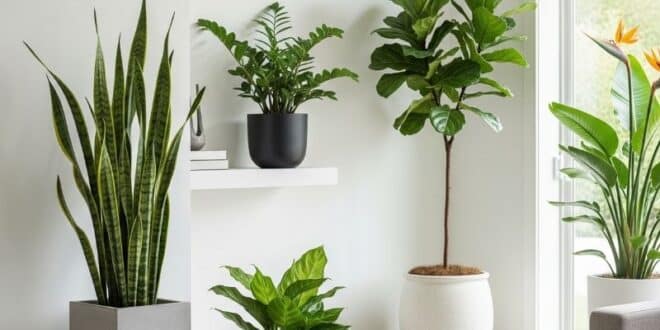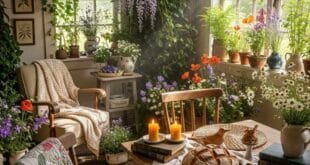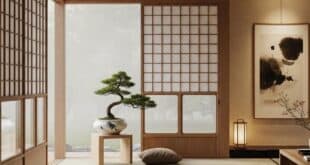Minimalism
Minimalism is more than just an aesthetic; it’s a philosophy centered on clarity, intention, and the principle of “less is more.” In a minimalist home, every object has a purpose and a place. There is no room for clutter, only for meaningful, beautiful forms. So, where do plants fit into this carefully curated world?
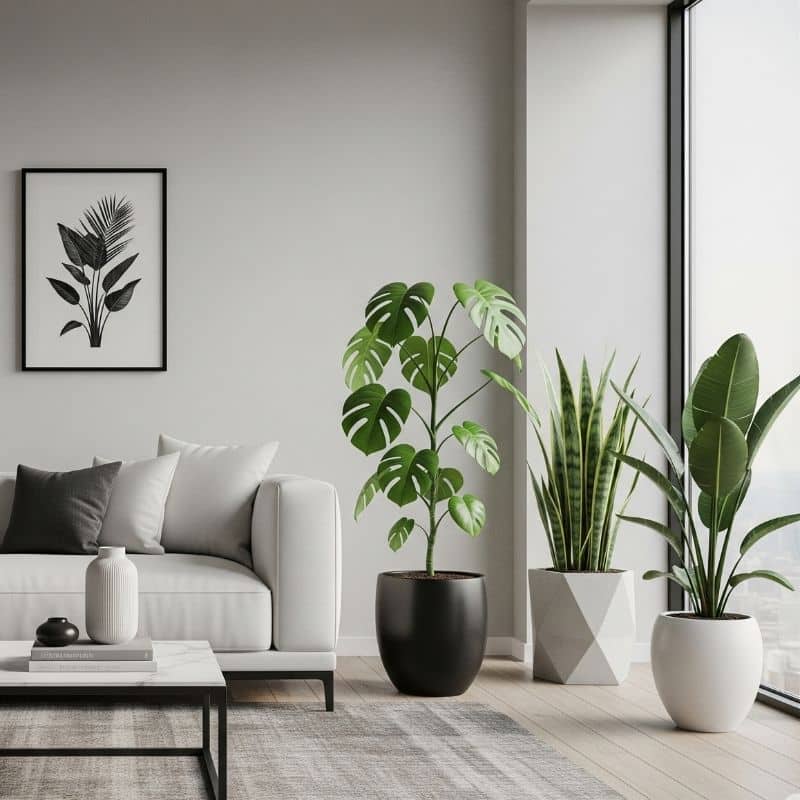
They fit in perfectly—not as clutter, but as living art. In minimalism, a plant is not just a plant; it is a piece of sculpture. It is chosen for its unique form, its clean lines, and its ability to introduce a touch of organic life into a structured environment without overwhelming it. The goal is not to create a dense jungle, but to place a single, perfect specimen that commands attention.
If you’re looking to enhance your clean, modern space, here are 12 architectural plants that are a minimalist’s dream.
The Icons of Modern Plant Design
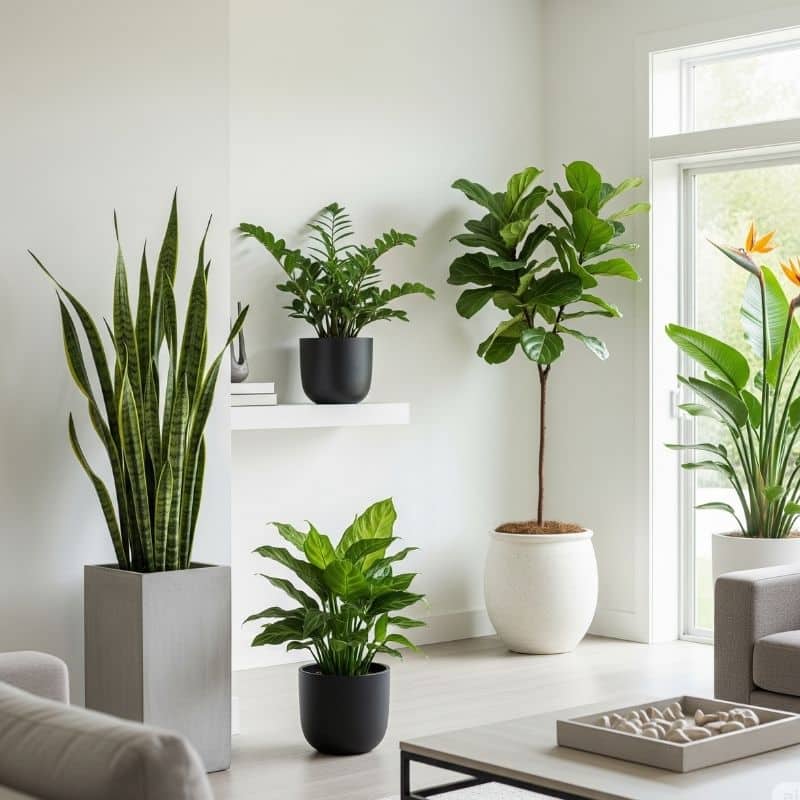
Snake Plant (Sansevieria trifasciata)
The Architectural Pillar The Snake Plant is the undisputed champion of minimalist decor for a reason. With its uncompromisingly vertical, sword-like leaves, it’s a masterclass in clean lines and structural integrity. The variegated patterns, ranging from dark green bands to silvery stripes, are like natural brushstrokes on a living canvas, adding visual interest without creating visual noise.
This plant is the definition of “form follows function.” Its primary function in a minimalist space is to provide a strong, clean, vertical element that draws the eye upward, creating a sense of height and order. It doesn’t sprawl or droop; it stands its ground with a quiet confidence that is the very essence of minimalism.
- Minimalist Care Tip: It thrives on neglect. Water it only when the soil is bone dry (every 4-8 weeks). Its needs are minimal, freeing up your time and attention for other things—a truly minimalist approach to plant ownership.
- Styling & Placement: Place it in a simple ceramic cylinder or a stark concrete planter to emphasize its architectural form. It creates a beautiful contrast against a soft-textured rug or a plain white wall.
ZZ Plant (Zamioculcas zamiifolia)
The Polished Professional The ZZ Plant exudes an aura of polished, effortless elegance. Its long, arching stems give rise to perfectly symmetrical, feather-like arrangements of waxy, deep green leaves. These leaves have a natural gloss that catches the light beautifully, appearing polished and healthy with almost no effort.
Its connection to minimalism lies in its tidy, self-contained nature. The ZZ Plant grows slowly and predictably, never becoming unruly or demanding. It respects personal space, making it the perfect green companion for an uncluttered desk or a serene living room corner. It’s a plant that looks after itself, reflecting a lifestyle of simplicity and ease.
- Minimalist Care Tip: Extremely low-maintenance. It tolerates low light and infrequent watering, thanks to its water-storing rhizomes. Its needs are as simple and clean as its form.
- Styling & Placement: It looks stunning in a sleek, dark pot to contrast with its vibrant green leaves. Ideal for an office desk, a floating shelf, or placed next to metal and glass elements to highlight its organic shape.
Fiddle Leaf Fig (Ficus lyrata)
The Gallery Statement The darling of interior design magazines, the Fiddle Leaf Fig is less of a plant and more of a living sculpture. When pruned to a “standard” or tree-like shape, its slender, woody trunk and massive, lyrical, violin-shaped leaves create a single, bold gesture that can define an entire room.
In a minimalist setting, the Fiddle Leaf Fig serves as the primary art piece. Its large scale and dramatic presence eliminate the need for smaller, potentially cluttered decorative items. It fills vertical space with grace and commands attention, asking you to appreciate its form and the beautiful “negative space” between its leaves.
- Minimalist Care Tip: This plant craves consistency. A simple, weekly watering ritual and a permanent spot in bright, indirect light are all it asks for. Its care becomes a mindful, intentional practice.
- Styling & Placement: Position a single, large specimen in an empty corner of a living room or by a large window. Use a simple, heavy pot (like concrete or ceramic) to anchor it visually.
Bird of Paradise (Strelitzia nicolai)
The Bold Silhouette For those who believe minimalism can still be dramatic, the Bird of Paradise is the perfect choice. It doesn’t create clutter with small, busy leaves. Instead, it makes its presence known with huge, paddle-shaped leaves that resemble the sails of a boat. Each leaf is a statement.
Its minimalist power comes from its scale and clean shapes. In a bright, open space, its dramatic silhouette creates a focal point that is both organic and incredibly graphic. It brings the awe of the tropics indoors without the chaotic feeling of a dense jungle, offering a bold yet controlled touch of nature.
- Minimalist Care Tip: Loves light. Give it the brightest spot you have. Water thoroughly when the top few inches of soil are dry. Wiping its large leaves with a damp cloth is a simple, meditative task that keeps it looking its best.
- Styling & Placement: Use it to frame a sliding glass door or a large picture window. Its height and scale make it perfect for rooms with high ceilings.
Sculptural Forms & Unique Silhouettes
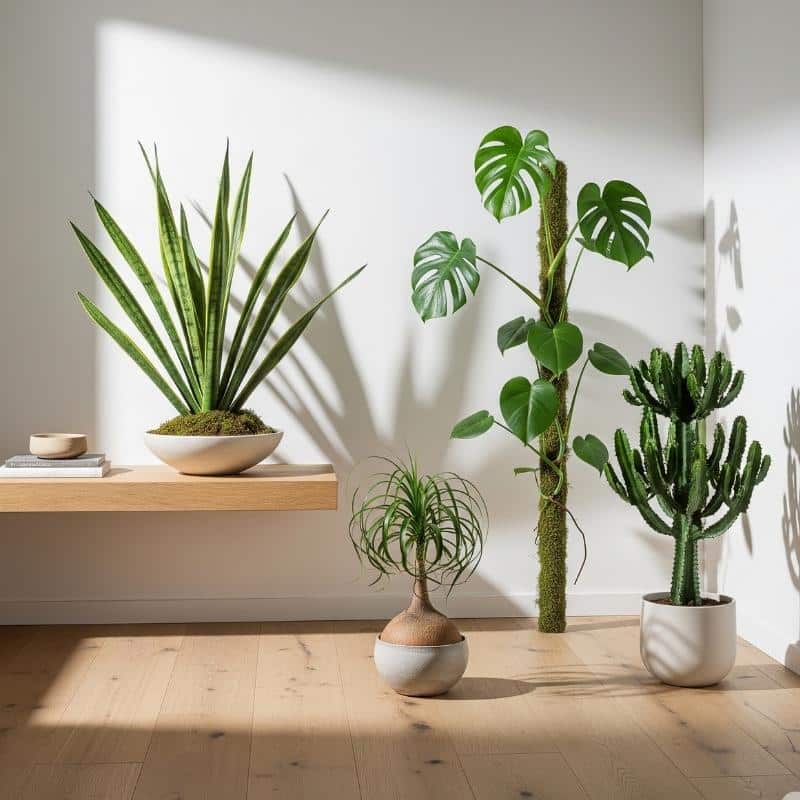
African Spear Plant (Sansevieria cylindrica)
The Zen Master A striking relative of the common Snake Plant, the African Spear is minimalism taken to its logical conclusion. It features a handful of smooth, perfectly round, spear-like leaves that grow straight up from the soil. Sometimes they are braided, but their purest form is a simple, fan-like arrangement.
This plant is a living exercise in line and form. There is nothing superfluous about it. It is a quiet, contemplative piece that encourages a moment of calm observation. Its presence in a room feels intentional and peaceful, like a carefully placed object in a Zen garden.
- Minimalist Care Tip: As tough as it is beautiful. It requires very little water and is tolerant of a wide range of light conditions. It is the definition of a low-effort, high-impact plant.
- Styling & Placement: A few spears in a shallow, sandy-colored bowl on a console table or a floating oak shelf creates a powerful, sculptural statement.
Monstera Deliciosa (Swiss Cheese Plant)
The Graphic Designer While a mature Monstera can feel lush and wild, its fundamental appeal to a minimalist is its incredible graphic quality. The iconic splits and holes in its leaves, known as fenestrations, are a masterwork of natural design. They break up the solid green, creating a play of light and shadow.
In a minimalist context, the Monstera is all about celebrating this natural artwork. The “negative space” created by the fenestrations is just as important as the leaf itself. It prevents the plant from feeling like a heavy, green mass and instead presents it as a light, airy, and dynamic sculpture.
- Minimalist Care Tip: Moderate care. It prefers bright, indirect light to develop more splits. Allow the soil to dry out partially between waterings. Its growth is a rewarding process to observe.
- Styling & Placement: Train it up a single, slender moss pole to emphasize its climbing nature and create a vertical piece of art. Its leaves look stunning against a plain, light-colored wall.
Ponytail Palm (Beaucarnea recurvata)
The Quirky Sculpture Full of character and personality, the Ponytail Palm is a conversation starter. Its most prominent feature is its thick, bulbous trunk (caudex) which stores water and resembles an abstract sculpture or an elephant’s foot. From the top of this sturdy base erupts a playful fountain of long, thin, curly leaves.
It’s perfect for minimalism because the visual weight and interest are all concentrated in its unique base. The leaves provide a soft, airy contrast but don’t create clutter. It’s a single object with two beautiful, opposing textures, making it a complete decorative statement on its own.
- Minimalist Care Tip: It’s a succulent in disguise. It thrives on bright light and very infrequent watering. The trunk stores all the water it needs, so it’s best to forget about it.
- Styling & Placement: An ideal floor plant that doesn’t demand much space. Place it in a simple, low-profile pot that shows off the beautiful shape of its trunk.
Euphorbia Trigona (African Milk Tree)
The Living Candelabra Often mistaken for a cactus, this striking succulent has a strong, architectural form that grows vertically in a shape reminiscent of a candelabra. Its ribbed stems and tiny leaves create a repeating, geometric pattern that is visually clean and rhythmically satisfying.
Its appeal lies in its stark, architectural silhouette. It is a living structure that draws strong vertical lines in a room, adding height and a touch of the exotic desert landscape. It is both a plant and a piece of modern sculpture.
- Minimalist Care Tip: Loves sun and hates overwatering. Treat it like a cactus. Plant it in fast-draining soil and water only when the soil is completely dry.
- Styling & Placement: It’s a natural focal point. Place it where sunlight can hit it, casting interesting shadows against a plain wall and highlighting its unique candelabra shape.
The Essence of Simple Elegance
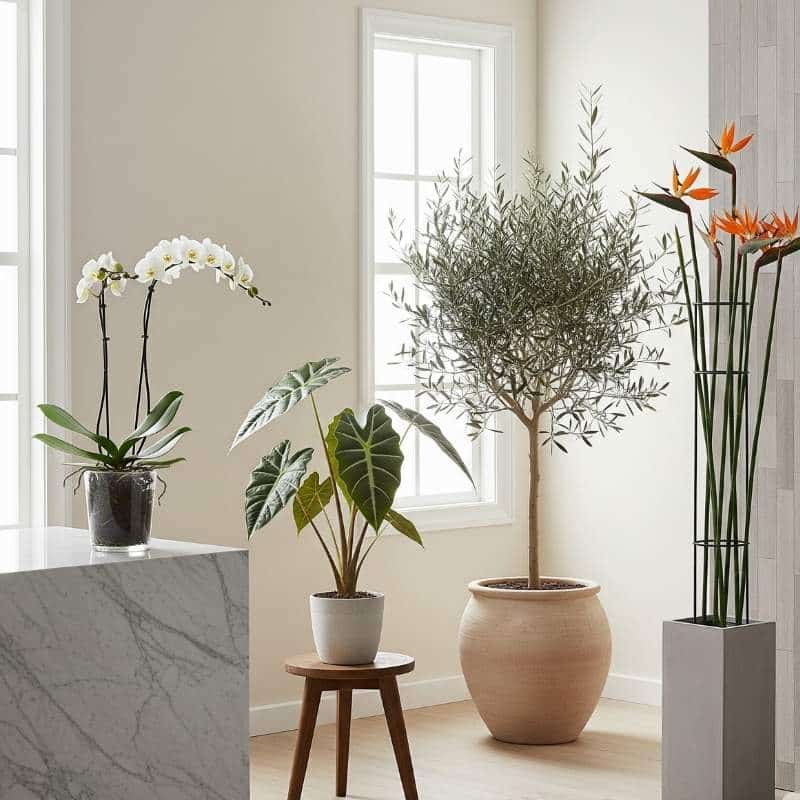
Orchid (Phalaenopsis)
The Ephemeral Beauty The Orchid is the ultimate expression of “less is more.” It doesn’t rely on dense foliage for its impact. Instead, its beauty comes from a single, graceful arch of perfectly formed, long-lasting blossoms. It is a symbol of elegance, refinement, and ephemeral beauty.
For the minimalist, an Orchid is a seasonal art piece. It provides a perfect, temporary splash of color and intricate form in an otherwise neutral space. It teaches an appreciation for fleeting beauty and the value of a single, perfect object over an abundance of lesser things.
- Minimalist Care Tip: The biggest mistake is overwatering. Water it thoroughly only when its roots (visible in a clear pot) turn silvery-green. It requires very little but very specific attention.
- Styling & Placement: It needs no fancy pot or arrangement. A simple glass or white ceramic pot on a clean surface, like a marble countertop or a wooden side table, is all that is required to showcase its elegance.
Alocasia Polly
The Polished Arrowhead The Alocasia Polly is a study in high contrast and sharp lines. Its deep, glossy green leaves are shaped like dramatic arrowheads and are strikingly defined by thick, silvery or white veins. Each leaf is held aloft on its own slender, upright stem, giving the plant a clean, open structure.
This plant is chosen not for its size, but for the intense, graphic detail of its leaves. It is a “macro” beauty, inviting closer inspection. In a minimalist room, it serves as a small but powerful point of interest, proving that a decorative element doesn’t need to be large to have a major impact.
- Minimalist Care Tip: It demands attention. It loves high humidity and consistently moist (but not soggy) soil. Its care is a deliberate act, making its presence in the home all the more intentional.
- Styling & Placement: Perfect for a desk, a minimalist open-shelving unit, or a bathroom vanity where its humidity needs can be met and its stunning leaves can be appreciated up close.
Olive Tree (Olea europaea)
The Mediterranean Muse An indoor Olive Tree brings a completely different texture to a minimalist space. It evokes a sense of ancient calm, sun-drenched landscapes, and rustic sophistication. Its thin, sculptural branches and delicate, silvery-green leaves are sparse, creating an airy, light-filled feeling.
Unlike lush tropicals, the Olive Tree is about subtlety and negative space. Its beauty lies in what is not there—the space between the branches and the delicate play of light through its sparse leaves. It brings a touch of worldly, rustic charm without any of the heaviness.
- Minimalist Care Tip: It needs sun, and lots of it. A south-facing window is ideal. It prefers to dry out between waterings, mimicking its native Mediterranean climate.
- Styling & Placement: Place it in a large, unglazed terracotta or a simple, off-white concrete pot. It looks beautiful standing alone in a bright, sunlit corner.
Strelitzia juncea (Leafless Bird of Paradise)
The Pure Form For the true connoisseur of minimalism, the Strelitzia juncea is a revelation. This rare variety of the Bird of Paradise does away with leaves almost entirely, presenting itself as a tight cluster of upright, reed-like green stems that taper to a point.
This plant is not about foliage; it is about pure line and form. It is a living drawing in three-dimensional space, a bundle of vertical lines that creates the most striking and simple silhouette imaginable. It is the ultimate architectural plant, asking nothing more than to be appreciated for its fundamental structure.
- Minimalist Care Tip: Care is similar to its leafy relatives. It needs bright light and regular watering during the growing season. Its needs are simple, but its visual impact is immense.
- Styling & Placement: Place it in a tall, narrow planter to accentuate its powerful verticality. It looks incredible against a concrete or wood-paneled wall.
The Minimalist’s Approach to Plants
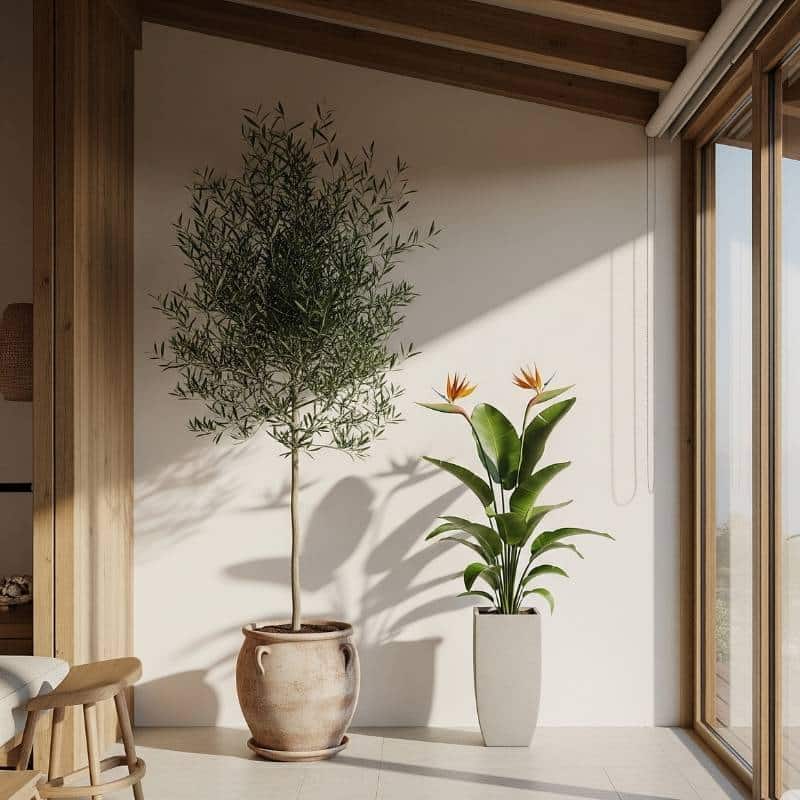
The key to successfully incorporating plants into a minimalist home is intention. It’s not about how many plants you have, but how you use them. Choose one or two high-impact, sculptural plants that you love and give them the space they need to be appreciated as a piece of art. In minimalism, every element counts—especially the living ones.

